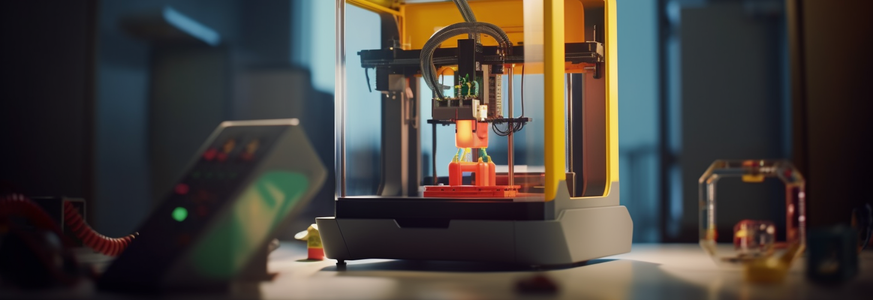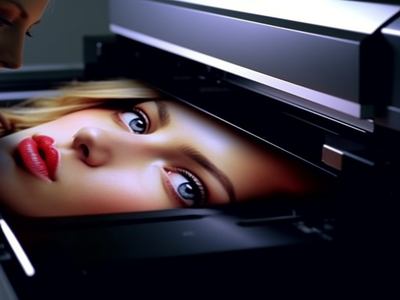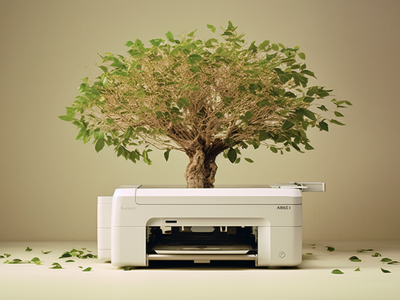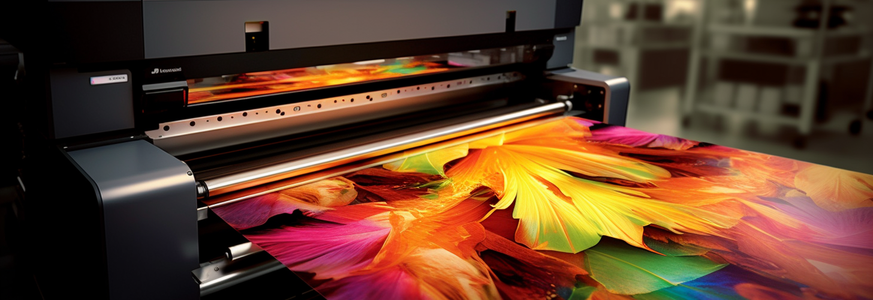The future of printing
How next-generation printers are revolutionizing the industry
The printing industry has undergone a remarkable transformation in recent years, thanks to the introduction of next-generation printers. These state-of-the-art machines are revolutionizing the way people think about printing, both in terms of what is possible and how it can be achieved.
From 3D printing to high-speed digital printing, these new technologies are opening up exciting possibilities for businesses and individuals alike. One of the most significant developments in the world of printing has been the emergence of 3D printing. This process enables the creation of three-dimensional objects from digital models, allowing designers and engineers to quickly prototype before committing to expensive manufacturing processes.
High-speed digital printers have also proven to be game-changers, offering unmatched efficiency and quality in print production. At the same time, eco-friendly printing solutions are making it easier than ever for businesses to reduce their carbon footprint while still achieving outstanding results.
With so many advances, it's clear that next-generation printers will continue to shape the future of this dynamic industry for years to come.
3D printing: the future of prototyping and manufacturing
 The use of additive manufacturing, popularly known as 3D printing, is increasingly transforming prototyping and manufacturing processes across a variety of industries. 3D printing enables the creation of complex geometries that may not be achievable through traditional subtractive methods. This technology has become increasingly accessible and affordable in recent years, making it a valuable tool for large companies and small businesses alike.
The use of additive manufacturing, popularly known as 3D printing, is increasingly transforming prototyping and manufacturing processes across a variety of industries. 3D printing enables the creation of complex geometries that may not be achievable through traditional subtractive methods. This technology has become increasingly accessible and affordable in recent years, making it a valuable tool for large companies and small businesses alike.
A significant advantage of 3D printing is its ability to efficiently produce individualized creations. With traditional manufacturing techniques, producing custom products can be expensive and time-consuming due to the need for specialized tooling or molds. In contrast, 3D printing allows manufacturers to produce unique items without the need for expensive molds or tools, as the design can be easily modified digitally. As such, this technology offers a more cost-effective way to produce low volumes of personalized products.
Advances in 3D printing technology and materials have also enabled mass production with increased efficiency. For example, companies are now using large-scale industrial printers that can produce multiple components simultaneously. In addition, new materials such as metal powders are being developed that allow for greater strength and durability in printed parts.
As a result, large industries such as aerospace and automotive are integrating this technology into their manufacturing processes due to its advantages in speed, cost-effectiveness and flexibility. The use of 3D printing has opened up new opportunities for prototyping and manufacturing processes in various industries. Its ability to efficiently create individualized products while enabling mass production with increased efficiency makes it an exciting prospect for companies looking to remain competitive in today's market.
Advances in both technology and materials will continue to drive innovation in additive manufacturing.
High-speed digital printers: efficiency and quality combined
 Efficient, high-quality printing has become a reality thanks to recent advances in high-speed digital printers. These printers offer cost-effective solutions for businesses that require large volumes of print jobs in a short time without sacrificing quality.
Efficient, high-quality printing has become a reality thanks to recent advances in high-speed digital printers. These printers offer cost-effective solutions for businesses that require large volumes of print jobs in a short time without sacrificing quality.
High-speed digital printers are capable of producing prints at resolutions up to 2400x2400 dpi, making them ideal for creating graphics, photos and text documents.
Versatile applications also make high-speed digital printers an attractive option for businesses. They can print on a variety of paper stocks, including heavy cardstock and glossy photo paper. In addition to traditional document printing, these printers can also produce marketing materials such as brochures, flyers and posters. Special features such as duplex printing (printing on both sides of a page) and collation (sorting printed pages into order) further increase their versatility.
High-speed digital printers are revolutionizing the industry by combining efficiency and quality while remaining cost-effective. Their versatile applications offer businesses greater flexibility to quickly produce marketing materials or documents without sacrificing quality. As technology advances in the field of printing, we can expect even more exciting innovations from this type of printer in the near future.
Eco-friendly printing: Sustainable solutions for a greener world
 With the increasing awareness of environmental protection, printing technology has evolved to provide greener solutions for a cleaner world.
With the increasing awareness of environmental protection, printing technology has evolved to provide greener solutions for a cleaner world.
The use of eco-friendly ink is one such solution that has gained popularity in recent years. Unlike traditional ink, which contains harmful chemicals that can affect both human health and the environment, eco-friendly ink is made from natural ingredients such as vegetable oils and soybeans. Not only does it reduce the carbon footprint, but it also provides a safer alternative for those who work with printing materials.
In addition to eco-friendly ink, paper alternatives are another way to reduce the impact of printing on the environment. Today's printers offer several options for sustainable and cost-effective paper alternatives. Recycled paper is one such example that reduces deforestation by using materials that have already been used.
In addition, tree-free papers such as bamboo or hemp paper have emerged as an environmentally friendly option because they produce more pulp per acre than traditional wood pulp.
Eco-friendly printing practices are becoming more popular as society becomes more conscious of conserving our planetary resources. Eco-friendly inks and sustainable paper alternatives are two key ways that companies can significantly reduce their environmental impact while producing high-quality prints.
With further advances in green technology, it is likely that new innovations will emerge to take this trend even further towards a greener future for everyone in the printing industry.
Customization and personalization: the power of next-generation printers.
 Customization and personalization are becoming more common in printing as the power of modern printers allows for greater flexibility and creativity in the design of printed products. This trend is not limited to companies seeking personalized marketing materials, but has also permeated the personalized gift sector.
Customization and personalization are becoming more common in printing as the power of modern printers allows for greater flexibility and creativity in the design of printed products. This trend is not limited to companies seeking personalized marketing materials, but has also permeated the personalized gift sector.
With next-generation printers, individuals can now create unique designs on a variety of products, from T-shirts to cell phone cases. The ability to personalize products with unique designs has opened up new avenues for gifts. Personalized gifts allow people to express their love or appreciation in a more meaningful way than with generic store items.
For example, personalized photo albums or canvas prints can capture precious memories and turn them into tangible keepsakes that will be cherished for years. Personalized mugs or key chains can add an extra touch of thoughtfulness to everyday items.
In addition to personal use, customization has also proven useful in business applications such as targeted marketing campaigns. By tailoring promotional materials specifically to the interests and preferences of individual customers, businesses can increase engagement rates and ultimately drive more sales. Next-generation printers enable businesses to produce high-quality, customized materials quickly and efficiently, giving them an edge over competitors that rely on traditional printing methods.
Augmented Reality Printing: Bring real-world objects to life.
 Augmented reality enables the creation of interactive and immersive experiences that bring printed objects to life. With augmented reality, printed materials can be transformed into dynamic visualizations that provide users with an engaging and interactive experience. This technology has revolutionized the way we interact with printed media by allowing us to explore, manipulate and learn about these materials in new ways.
Augmented reality enables the creation of interactive and immersive experiences that bring printed objects to life. With augmented reality, printed materials can be transformed into dynamic visualizations that provide users with an engaging and interactive experience. This technology has revolutionized the way we interact with printed media by allowing us to explore, manipulate and learn about these materials in new ways.
Interactive experiences are at the forefront of augmented reality. These experiences allow users to interact with printed materials in ways that were not possible before. For example, a print ad for a car company might use augmented reality technology to create an immersive experience where users can virtually sit in the car, explore its features, and virtually test drive it. This type of advertisement not only grabs the attention of potential customers, but also provides them with valuable information about the product.
Immersion is another important aspect of augmented reality technology. By using this technology, printed materials can be transformed into 3D models or animations that respond to user interaction. This creates a truly immersive experience where users feel like they are part of the environment presented to them.
Immersion has applications beyond marketing; it can also be used in educational and training environments where students can interact with 3D models or simulations in the context of their curriculum. Overall, augmented reality printing represents a significant evolution in how we interact with printed media and offers limitless opportunities for future development and innovation.
,no_upscale(),format(png)/prod/3/5/2/bimg_352647_87017802_2838713634.jpg)
,no_upscale(),format(png)/prod/3/5/2/bimg_352654_212034949_xxl3.jpg)
,no_upscale(),format(png)/prod/1/9/0/bimg_190731_58099224_xxl3.jpg)
,no_upscale(),format(png)/prod/4/5/2/bimg_452918_91417259_9855960173.jpeg)
,no_upscale(),format(png)/prod/5/0/1/imp_1_501142.jpg)
,no_upscale(),format(png)/prod/5/0/0/imp_1_500832.jpg)
,no_upscale(),format(png)/prod/5/0/0/imp_1_500972.jpg)
,no_upscale(),format(png)/prod/5/0/1/imp_1_501063.jpg)
,no_upscale(),format(png)/prod/5/1/4/imp_1_514390.jpg)
,no_upscale(),format(png)/prod/4/9/4/imp_1_494903.jpg)
,no_upscale(),format(png)/prod/5/0/1/imp_1_501052.jpg)
,no_upscale(),format(png)/prod/4/9/1/imp_1_491640.jpg)
,no_upscale(),format(png)/prod/3/5/4/imp_1_354404.jpg)
,no_upscale(),format(png)/prod/4/0/7/bimg_407492_91262472_2055841784.jpeg)
,no_upscale(),format(png)/prod/4/2/2/imp_2_eVSN_422357.jpg)
,no_upscale(),format(png)/prod/4/2/2/bimg_422354_1374261_20220502_110437.jpg)
,no_upscale(),format(png)/prod/2/9/4/imp_1_294296.jpg)
,no_upscale(),format(png)/prod/2/1/2/imp_1_212585.jpg)
,no_upscale(),format(png)/prod/1/3/5/bimg_135679_57880002_xxl3.jpg)
,no_upscale(),format(png)/prod/1/9/0/bimg_190819_51418655_xxl3.jpg)
,no_upscale(),format(png)/prod/1/3/5/bimg_135622_go_4597229.jpg)
,no_upscale(),format(png)/prod/2/8/1/bimg_281527_58446678_xxl3.jpg)
,no_upscale(),format(png)/prod/2/9/4/imp_1_294299.jpg)
,no_upscale(),format(png)/prod/4/3/4/bimg_43452_21542435_9325516713.jpeg)